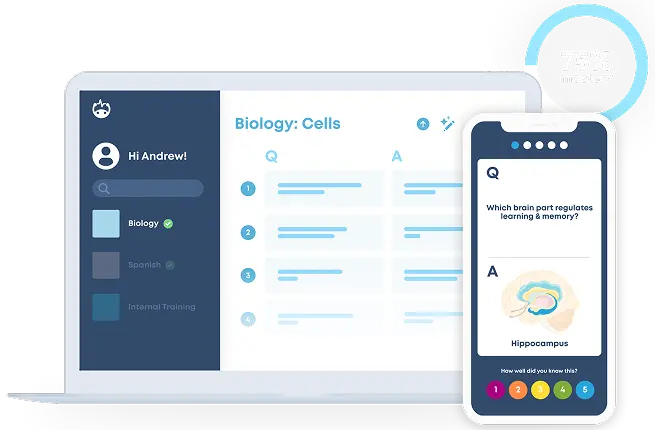The ultimate
study weapon.
Use AI to find or make flashcards from any source.
Learn faster with spaced repetition.







Attack your weaknesses.
Brainscape's online flashcards optimize your studying, by repeating harder concepts in the perfect interval for maximum memory retention.
Make flashcards faster.
Import vocab lists or question banks, use AI to summarize your notes or lessons into flashcards, or just manually create your own flashcards with a combination of text, images, and sounds.

Flexible content authoring.
Brainscape allows trainers to organize "decks", add images & sounds, and collaborate with multiple editors for real-time content deployment.
Thousands of subjects.
Most popular subjects
And more subjects...
Perfect for classes and groups.
Proven twice as effective as traditional methods.
At a study at Columbia University, students using Brainscape for just 30 minutes scored an average of 2x higher on post-tests than students who used books or paper flashcards. These learning benefits accrue exponentially when you have weeks or months' worth of content to study.

-
Free features
$0/mo.Pro
features$8/mo. -
Find great flashcards
Browse thousands of classes created by publishers, teachers, & students. -
Create great flashcards
Use easy authoring tools on both our website and our mobile & tablet apps. -
Import & export CSVs
Create cards faster using a spreadsheet, or download backups to repurpose elsewhere. -
Study with spaced repetition
Learn twice as much in half the time, with Brainscape's scientifically proven methods. -
Track your progress
Take control of your pace of learning, and benchmark yourself against global leaderboards. -
Sync between devices
All your flashcards and metrics are magically kept in sync across our web & mobile apps. -
Collaborate with classmates
Manage editing permissions to help spread the work across multiple collaborating authors. -
Share your class
Post a link to your class website, or tweet it out to the rest of the world!


